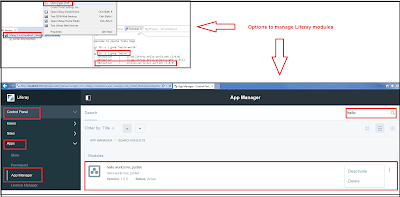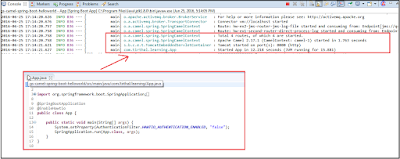This post is for
you, if you are looking for mounting a host directory (which is not underneath
the "C:\Users" folder) as a data volume in docker container using Docker Toolbox on Windows.
Problem Statement:
If you are trying to
mount a host directory (other than any folder not underneath the "C:\Users"folder) as a data volume specifically using Docker Toolbox on Windows, then
it's quite tricky to do.
As per docker
documentation --- "If you are using Docker Machine on Mac or Windows, your
Docker Engine daemon has only limited access to your OS X or Windows
filesystem. Docker Machine tries to auto-share your /Users (OS X) or C:\Users
(Windows) directory. So, you can mount files or directories on OS X
using".
This means, you can mount anything underneath "c:\Users"
directory of host your Windows machine as a data volume in docker container
seamlessly. For example, let's say you want to dump some data from
"c:\Users\tirthalp\data" directory to "data" directory
within Redis container in docker. Well, below just executing command will
enable you to do it.
docker run -v /c/Users/tirthalp/.docker/data:/data
--name <container-name> <image-name>
But, what is there is a need of mounting other folders (any
folder which is not underneath "c:\Users" directory) of your Windows
machine as a data volume in docker container? Well, that's not a piece
of cake. For example, if you execute below command, the container would not
complain. But actually mounting of folder in D drive as a data volume could not
happen and data from your host Windows machine would not be accessible in
docker container.
docker run -v /d/x-temp/data:/data --name
<container-name> <image-name>
Solution:
I could not locate
official docker documentation on this. After giving few tries, finally these
steps worked --- add a shared folder to Docker Host VM and mount it as a data volume. Although the
given steps are pretty clear, I thought to share screenshots of the same as
following.
Step 1: Stop Docker Machine
Step 2: Add Shared Folder in Oracle VirtualBox Manager
Open Oracle VM
VirtualBox Manager. Settings -> Shared Folder -> Add Share Folder (i.e.
Tirthal-LABs).
Step 3: Permanently mount VirtualBox shared folder as a
shared-data volume in Docker machine
Start docker
machine.
SSH to docker
machine, create directory in docker machine (i.e.
/home/docker/tirthal-projects) and mount VirtualBox shared folder name (i.e.
Tirthal-LABs) with it. This should enable you to access host Windows machine's
data in docker machine @ /home/docker/tirthal-projects.
Try restarting
docker machine. Now if you check at /home/docker/tirthal-projects, you would
not see mounted host machine's data. For permanent mounting, add following two
lines at the end of profile --- sudo vi
/mnt/sda1/var/lib/boot2docker/profile
mkdir /home/docker/<directory-name>
sudo mount -t vboxsf -o uid=1000,gid=50
<virtual-box-shared-folder-name> /home/docker/<directory-name>
Try restarting
docker machine again. Now if you check at /home/docker/tirthal-projects, you
would not see mounted host machine's data.
Step 4: Mount a shared-storage volume as a data volume
Now you should be
able to mount even other than "c:\Users" directories of host Windows
machine in docker container as a data volume, if you have completed the above
steps 1 to 3 successfully. For example, following command would mount "data"
folder in container with a shared-storage
"/home/docker/tirthal-projects/temp" on docker machine. Here, the
"/home/docker/tirthal-projects" is mounted with the host Window
machine's folder (i.e. D:\Tirthal-LABs\).
docker run -v /home/docker/tirthal-projects/temp:/data
--name <container-name> <image-name>
References:
- https://docs.docker.com/engine/installation/windows/
- https://docs.docker.com/engine/tutorials/dockervolumes/#/mount-a-host-directory-as-a-data-volume
- http://www.erikojebo.se/Code/Details/791









































